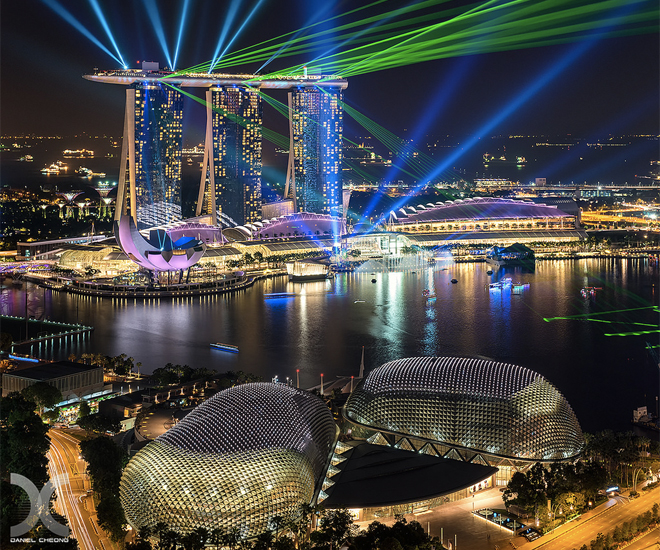The Crazy Rich Asians are in Hong Kong but Singapore steals the limelight
Hong Kong is home to most high net worth individuals but Singapore steals the limelight thanks to destination awareness, courtesy of Crazy Rich Asians

According to a recent Wealth-X study, Hong Kong has surpassed New York City as the home to the world’s most high net worth individuals or (thanks to the recent Hollywood hit) crazy rich “individuals”. Slightly under 10,000 people are worth at least $30 million in the former British colony, at least 1,000 more than high net worth individuals in New York City. In fact, the former British colony saw its “crazy rich” population grow 31% since 2017. Guess “Crazy Rich Asians” isn’t that fictional after all.
Hong Kong surpasses New York as home to most HWNIs
Wealth X’s list of top 10 ultra high net worth populations by city didn’t include Singapore (where the book was set) nor Malaysia (where the movie was mostly filmed) or any of the top Chinese metropoles. The world’s top 10 most ultra high net worth populations are:
- Hong Kong
- New York
- Tokyo
- Los Angeles
- Paris
- London
- Chicago
- San Francisco
- Washington DC
- Osaka
The Crazy Rich Asians are in Hong Kong but Singapore steals the limelight
Travel bookings websites Orbitz and Kayak, and search engine Google, saw search queries spike 20%, 41% and 27%, respectively the week after Crazy Rich Asians debuted in the city state. Movie-inspired destination tourism has been a growing trend since Peter Jackson’s Lord of the Rings epic trilogy and it’s been a growing since Game of Thrones helped give Croatia a boost in tourism. Typically, search data correlates to trends when they coincide with specific moments of time, pointing to indications of interest – for Singapore, Crazy Rich Asians seems to have done the trick. And why shouldn’t it have?
“The average Asian yacht owner is younger than that in the West, usually in their mid-40s. In the West, it’s more people who have been successful in their career and are enjoying their money in their 50s. There is a lot more new money in Asia.” – Paul Whelan, General Manager, Simpson Marine to CNBC

A full on party from the recently concluded Singapore RendezVous 2017
Since 2004, Singapore has been increasing compared to European city, Monaco. The similarities between Singapore and Monaco are quite remarkable: both small city states wielding a combination of soft power through high profile lifestyles and events while staking their claim on global financial markets; both make law, order and social cleanliness cornerstones of their culture; both are located by the sea, making them fertile grounds for yacht owning high net worth individuals and bastions for global trade; in fact, the similarities are enough to liken the Singapore as the Monaco of the East.
With a 92% Fresh score on Rotten Tomatoes, Crazy Rich Asians has been a cinematic coup for perception, much larger than arguably the Kim-Trump summit, such has been the “destination awareness” impact of Crazy Rich Asians that the Singapore Tourism Board even partnered with the film’s producers, Warner Bros. on the movie’s promotional activities while simultaneously working with New York-based public relations companies Edelman and Bullfrog + Baum for a public relations offensive.

Gardens by the Bay is home to the world’s first artificial supertrees
Destination Awareness is powerful indeed. In a comment to Forbes, General Manager of Western long haul markets for Tourism New Zealand, Gregg Anderson, stated in 2012 that, “We’ve seen a 50% increase in arrivals to New Zealand since Lord of the Rings.” The Fellowship of the Ring, the first in the trilogy of films, was released in 2001. In fact, a more recent example, Game of Thrones, has proven to be a double edged blessing.
The popular swords and sorcery franchise has turbo boosted Croatia’s economy to such an extent that the country’s Southern city Dubrovnik (popularly recognised as King’s Landing) is considering capping the number of visitors hoping to follow Cersei Lannister’s footsteps. Dubrovnik mayor, Mato Franković has had to deal with maintenance and social issues, cognisant of the UNESCO Old City World Heritage Site status medieval walls and heritage areas. In the rest of the country, overcrowding has reached pandemic problems as more tourists hunt down iconic Westorosi and Essos vistas.

Louis Vuitton Island Maison
Thus, Crazy Rich Asians doubles as a commercial for Singapore’s most luxurious hotspots, where characters played by actors Henry Golding and Constance Wu, among others, visit or in the general vicinity of everything from the iconic Marina Bay Sands Infinity pool, the high-end boutiques of world famous shopping destination, Orchard, and even Asian street cuisine at Newton. For some, the movie has been Asia’s “Wakanda” moment, for others, there has been calls for greater nuance.
The critics like Andrew Wong, claim that it doesn’t represent Asians beyond the Chinese majority enough to warrant the fanfare. To which a very valid rejoinder from many others, including this author has been, “It’s entertainment not documentary chrissakes.” Nevertheless, Singapore Tourism Board does have its work cut out for it if representation of Singapore has to encompasses the nuances and flavour of our racial diversity – 76.2% ethnic Chinese, 15%, Malays, and 7.4% ethnic Indians. Critics argue that Crazy Rich Asians do little to represent Malays, Indians and Eurasian minorities and they’re right save for one important fact – Author Kevin Kwan’s world and by proxy Singapore Tattle’s (a play on the name of a real society magazine in Singapore) world is very much Chinese-centric. It is Kwan’s world and criticisms about the lack of minority representation seriously need to flip through the last 10 or 18 years (Happy Birthday Prestige) of their magazines and count on two hands the number of minority races one can find in their event pages.

Cortina’s Rolex boutique is home to Asia’s largest Rolex Exhibition. Second largest worldwide.
Geopolitically speaking, China pretty much dominates how this part of the world looks to the rest. They’re always in the news for having lots of money and very little manners/taste/gracious. Inevitably, that’s how they come to represent “Asians” as a whole rather than distinct and separate cultures. And while this is not ideal, realpolitik and the real world is anything but ideal.
That said, Singapore’s assumption of the Monaco of the East mantle is not unwarranted. The city-state has become a playground for the rich and famous who spend millions of dollars on beautiful waterfront properties like Sentosa Cove. In a statement to CNBC, Paul Whelan, General Manager for Simpson Marine’s Singapore subsidiary said, “The average Asian yacht owner is younger than that in the West, usually in their mid-40s. In the West, it’s more people who have been successful in their career and are enjoying their money in their 50s. There is a lot more new money in Asia.”

Ariel view of Sentosa Cove
While Monaco’s Monte Carlo casino is world famous it accounts for only 4% of the state’s revenues – Singapore today, boasts two integrated casino resorts, contributing to from 1.5% to 2% of state’s revenues, to help boost its tourism revenue and are but just one part of its diverse tourism strategy, which includes non-gaming attractions such as Gardens by the Bay, National Gallery and Formula One Singapore Grand Prix; Speaking of which, while Monaco has had Formula One street races for decades, Singaporean leaders turned down the opportunity in the 1980s, only to allow it 20 years later and the world’s first night street race is expected to run till 2021.
Singapore might not have been as racially represented by Crazy Rich Asians as social justice warriors (SJWs) might have liked but the wealth of the city state certainly has not been exaggerated. In 2014, a market study ranked Singapore as the world’s 7th most important luxury market with Swiss watch imports of CHF 98.7 million dollars. Singapore has the third highest per-capita GDP in the world in terms of Purchasing Power Parity.

The Hour Glass Malmaison boutique is emblematic of the wealth and opulence of Singapore










